Removing
Replace both brake shoes, even if only one of them is oily or worn.
1. Remove the brake drums.
It is recommended that only one side be disassembled so that the other side remains a reference for assembly.
2. Disconnect the upper return spring using special pliers, eg HAZET 797 Disassembly can also be done with a piece of pipe, but this is somewhat more difficult.
Removing the top return spring
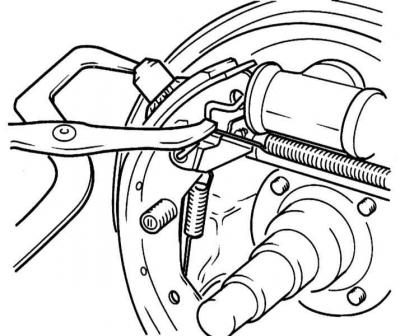
3. Remove the retainer of the return spring with a screwdriver from the hole in the brake shoe.
Removing the return spring holder
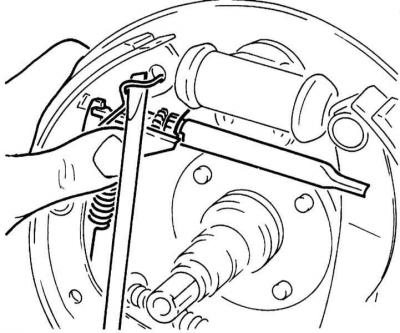
4. Remove the adjusting lever from the brake shoe and disconnect the return spring.
5. Slightly pull the brake shoes outward and remove the adjusting expansion bar. Remove the brake shoes.
Removing the spreader bar
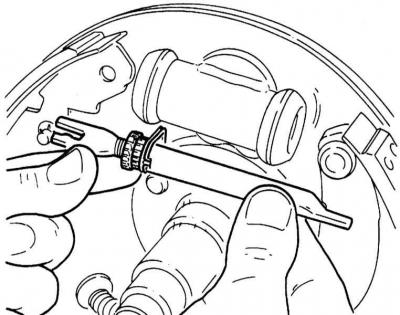
6. Remove the brake shoe front fastening pin. To do this, press the spring plate and turn it at an angle of 90 degrees. At the same time, hold the pin at the back. Remove the spring plate and remove the pin.
Removal of a lock pin of fastening of a brake shoe
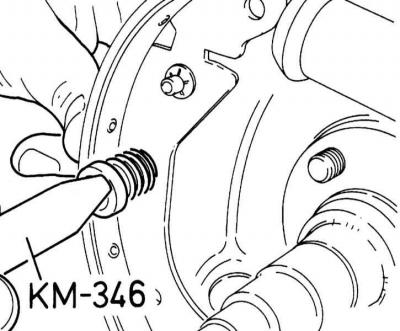
7. Remove the rear brake shoe retainer pin in the same manner.
8. Disconnect the lower return spring.
9. Remove the brake shoes. At the same time, disconnect the parking brake cable from the anchor pin.
Installation
Replace everything (four) brake shoes at the same time. You can replace both the brake shoes and only the brake linings. Replacement of brake pads is described in Section Replacing the brake linings of drum brakes. It is recommended to use only original brake shoes and pads or those recommended by Opel. Clean the brake drum and brake shield with compressed air or wipe them with alcohol.
Do not inhale brake dust. When removing the brake shoes, do not press the brake pedal, the piston may come out of the brake cylinder. If there are traces of brake fluid on the brake cylinder, it should be replaced.
1. Lubricate the anchor pin in the area where the shoes fit with a thin layer of heat-resistant grease, for example, OPEL 19 42 588 (90 166 282) or high temperature copper grease. Pre-clean the areas to be lubricated with a soft wire brush.
Lubrication points
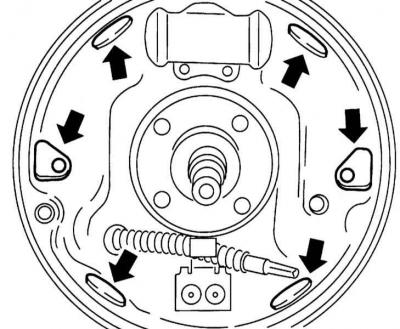
2. Connect the brake shoe lever to the parking brake cable. Make sure the cable is in the correct position.
Connecting shoe lever to parking brake cable
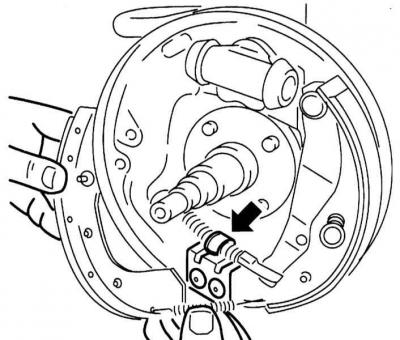
3. Install the lower return spring.
4. Install the brake shoes on the anchor pin. To do this, push the locking pin from behind and install the spring. Tension the spring with the plate, then rotate the plate 90 degrees and fix it in this position. At the same time, hold the lock pin at the rear.
5. Check the ease of movement of the adjusting wheel and the adjusting spreader bar of the lever. If necessary, disassemble the bar and clean it.
6. Lubricate the bar with a thin layer of silicone grease, for example, OPEL 19 70 206 (90 167 353). Screw the adjusting wheel all the way back, then release it again. The adjusting wheel must not be blocked in the stop.
Do not confuse the expansion bars of the left and right brakes.
7. Install the adjusting bar from above between the brake shoes. At the same time, keep an eye on her position.
The position of the adjusting bar when it is installed
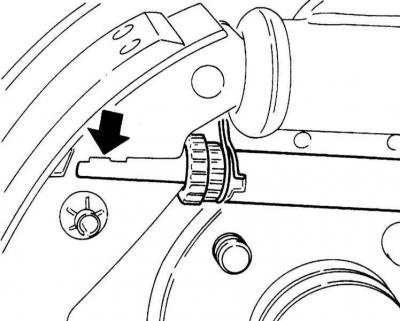
When installing new brake shoes, make sure that the adjusting lever disc spring is installed.
8. Install the adjusting lever with the spring onto the pin.
Installing the adjusting lever
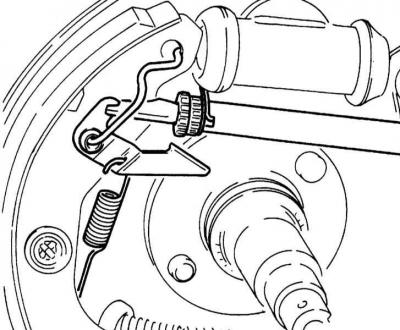
9. Use a collet to connect the adjusting lever return spring to the brake shoe.
10. Insert the return spring holder into the clamping pin and press it into the hole in the brake shoe.
11. Connect the upper return spring with the pliers to the holder (refer to illustration).

Visitor comments